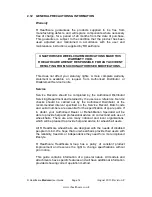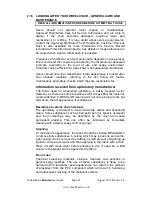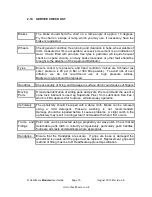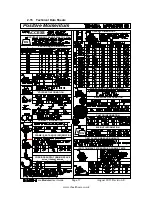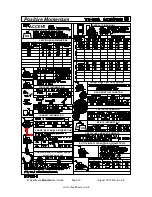
R Healthcare
Modular
User Guide
Page
32
August 2013 Revision E
www.rhealthcare.co.uk
Guidelines for Wheelchair & Occupant Transportation in Vehicles
This information is given in order to reduce the risk of bad practice. It is
based on current available knowledge. Wheelchair users and
transport operators have a responsibility to ensure that safety
measures take account the needs of wheelchair occupants and other
passengers to minimise the risks involved for each individual situation.
Vehicles transporting wheelchair occupants should have safe, secure
wheelchair access, transport operators should recognise this. Available
publications are MDD Report No 92/07, and Dept of Transport Code of
Practice VSE 87/1.
Public Transport
Wheelchair users who choose to travel in a local bus or public service
vehicle should recognise that this involves risk, and a complexity of
related issues. The user has a responsibility to make the decision of
how to travel carefully. Pre journey planning will avoid difficult access
situations, which could be encountered later, when it is too late to do
anything about it. In busy, congested areas, users will require skill to
avoid collisions with other passengers, when approaching and
boarding the vehicle. Wheelchair brakes may not hold a chair and
occupant stable against inertia forces of normal traffic conditions, such
as cornering or coming to a halt, and wheelchairs in vehicles should be
prevented from moving by other means. Dept of Transport approved
designated wheelchair areas in low floor buses with support pillars and
hand rails at wheelchair height are the most suitable. Users are
advised to check availability of wheelchair facilities with the transport
vehicle operator, and note time schedules.
Specialised Transport for Wheelchair Occupants.
These vehicles should be fitted with approved restraint systems. Dept
of Transport approved taxis for individuals are available, but users with
neck problems are advised to check that there is adequate headroom.
Restraint systems for minibuses range from wheelchair tie downs, to
more compact foldaway devices. Installers and operators of vehicles
with restraint systems must be trained in their correct use by the
restraint manufacturer, or approved mobility specialist. The CTA can
provide useful advice. R Healthcare are participating in the creation of
new safety standards in this area through membership of BSTA, in co-
operation with the Dept of Transport & B.S I.
The wheelchair must be secured to the floor by a restraint system,
preferably in line with direction of travel. see
Fig15
. The wheelchair
should not be occupied by more than one person. Fittings such as
trays, should be stowed separately.
Wheelchairs used for transportation of occupants in vehicles should
have a full height backrest of at least 415 mm for adults, head supports
are recommended.

















